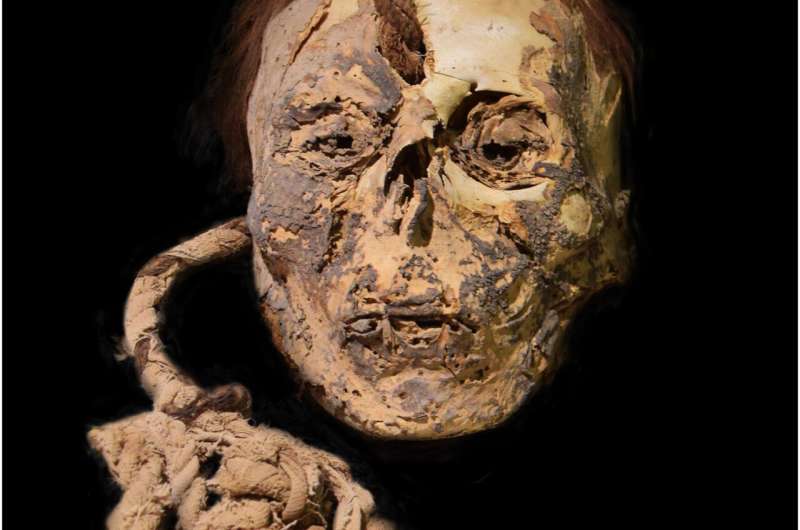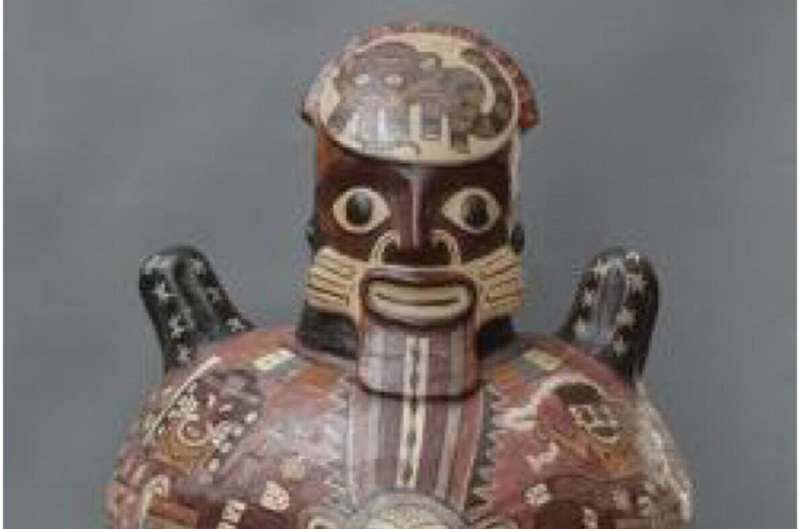November 2, 2022 report
Evidence found of psychoactive and stimulant plants use by Nazca people in Peru

A trio of researchers from the University of Warsaw, Collegium Medicum of Nicolaus Copernicus University and Centro Italiano Studi e Ricerche Archeologiche Precolombiane di Brescia has found evidence of early Nazca people in southern Peru using psychoactive and stimulant plants. In their paper published in Journal of Archaeological Science, Dagmara Socha, Marzena Sykutera and Giuseppe Orefici describe their study of trophy heads and mummies excavated as part of the Nazca Project.
Prior research has shown that the Inca gave ayahuasca, a hallucinogenic beverage, to people who were to be sacrificed, likely to keep them calm. In this new effort, the researchers studied the remains of Nazca people buried along the southern coast of Peru during the years 3500 BC to 476 AD.
The Nazca people have become famous in modern times for their advanced irrigation techniques and their geoglyphs in the Pampa Colorada desert. In this new effort, the researchers wanted to know if the Nazca also gave hallucinogens to people prior to sacrifice.
The work involved collecting hair samples from four trophy heads and from 18 mummies to look for evidence of chemicals that might have been used to calm victims. Prior research has shown that the Nazca had developed techniques for preserving the heads of some people for use in rituals or ceremonies. The Nazca also developed techniques to preserve whole bodies of some people who died, resulting in mummified corpses.
The researchers found evidence of chemicals from the San Pedro cactus in hair from one of the trophy heads, that of a child—the findings marked the first time that evidence had been found of Nazca sacrificial victims being given stimulants before death. They also found evidence of cocaine and Banisteriopsis caapi, a major ingredient in ayahuasca in some of the other samples.

The researchers also compared the locations where the remains had been found to track the use of such chemicals by the Nazca people. They also note that a large number of artifacts, such as pots and textiles, had been found close to where the remains were buried.
More information: Dagmara M. Socha et al, Use of psychoactive and stimulant plants on the south coast of Peru from the Early Intermediate to Late Intermediate Period, Journal of Archaeological Science (2022). DOI: 10.1016/j.jas.2022.105688
Journal information: Journal of Archaeological Science
© 2022 Science X Network





















